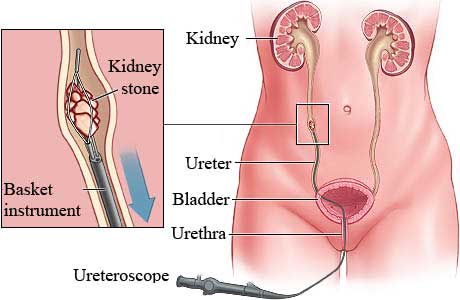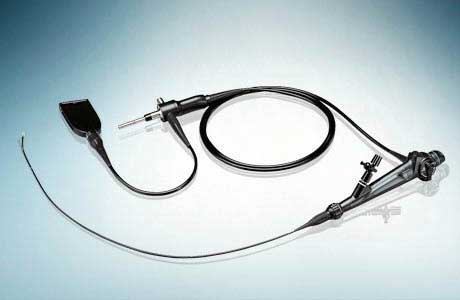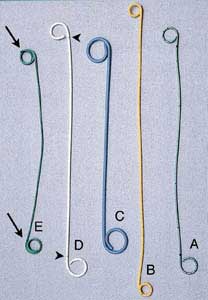Ureteroscopy Surgery in India |
 |
Ureteroscopy is a safe and insignificantly obtrusive strategy for treating stone sickness in the kidney and ureter. It can be utilized either as essential treatment or as rescue treatment for remaining stones taking after treatment with different modalities, for example, extracorporeal shockwave lithotripsy.
 What are the reasons for having ureteroscopy? What are the reasons for having ureteroscopy?
Stones ordinarily in the distal or center ureter by unbending
ureteroscopy that are unrealistic to pass suddenly or are bringing on noteworthy distress
Stones in the kidney that are not treatable by ESWL
To decide the purpose behind blood in the pee
Treatment Overview
-
The specialist, regularly a urologist, doesn't make any (cuts in the body) for this methodology. He or she first embeds a meager review instrument (ureteroscope) into the urethra (the tube that leads from the outside of the body to the bladder). At that point, the specialist goes the ureteroscope through the bladder and the ureter, to get to where the kidney stone is found.
-
The urologist evacuates the kidney stone with forceps or by utilizing an instrument with a "wicker bin" that snatches the stone.
-
Smaller stones can be evacuated all in one piece. Bigger stones may should be separated before they can be evacuated.
-
Several sorts of instruments are accessible to separate stones. Be that as it may, most urologists like to utilize a laser.
-
The urologist can likewise utilize the ureteroscope to achieve a kidney stone that is stuck in the ureter soon after it leaves the kidney. He or she may then attempt to push the stone move down into the kidney. After the stone is back in the kidney, the stone might be separated.
What are the advantages of ureteroscopy over other treatments?
-
The specialist, regularly a urologist, doesn't make any (cuts in the body) for this methodology. He or she first embeds a meager review instrument (ureteroscope) into the urethra (the tube that leads from the outside of the body to the bladder). At that point, the specialist goes the ureteroscope through the bladder and the ureter, to get to where the kidney stone is found.
-
The urologist evacuates the kidney stone with forceps or by utilizing an instrument with a "wicker bin" that snatches the stone.
-
Smaller stones can be evacuated all in one piece. Bigger stones may should be separated before they can be evacuated.
-
Several sorts of instruments are accessible to separate stones. Be that as it may, most urologists like to utilize a laser.
-
The urologist can likewise utilize the ureteroscope to achieve a kidney stone that is stuck in the ureter soon after it leaves the kidney. He or she may then attempt to push the stone move down into the kidney. After the stone is back in the kidney, the stone might be separated.
What are the risks of ureteroscopy?
Urine contamination: this for the most part requires anti-infection agents as it were
-
Bleeding: this more often than not settles rapidly
-
Damage to the ureter bringing about narrowing of the ureter ('stricture') or aperture: this is uncommon and may require extending by an inflatable and insertion of a JJ stent
-
Failure to break and recover the stone: an option technique might be fundamental
-
Perforation of the ureter: normally a JJ stent is required for a couple of weeks after such a damage
-
Detachment ('separation') of the ureter from kidney: this is exceptionally uncommon and is at times unavoidable, yet may require open surgery to repair
-
Abdominal or back inconvenience
-
Side-impacts due to a JJ stent
What are the alternatives to ureteroscopy?
ESWL: this is appropriate generally for stones in upper ureter and kidney constrained to a specific size. It can be utilized for stones as a part of the lower ureter close to the bladder, despite the fact that ureteroscopy has a tendency to be picked by numerous urologists
PCNL: this is great at evacuating stones in the kidney and upper ureter, yet includes making a little entry point in the back and going a tube through the kidney. For the last reason, it is more intrusive than ureteroscopy.
Laparoscopic or open surgery: This is more effective than ureteroscopy, however includes making a few cuts and needs a more extended healing center remain. There is more serious danger for disease thus, despite the fact that the outright hazard is still very little. This is generally attempted after all different treatments have fizzled.
What do you have to do before ureteroscopy treatment?
Much of the time, admission to doctor's facility will either be arranged or as a crisis in light of extreme torment because of hindrance of the kidney. Ureteroscopy is performed under general soporific, so no nourishment or water ought to be devoured before the season of the operation. For the most part, no sustenance ought to have been eaten for no less than 5 hours before surgery, yet the definite term will fluctuate contingent upon the doctor's facility. Under 5 hours of no drinking is required.
On the off chance that ureteroscopy is being performed in light of stones, a X-beam might be required before setting off to the operation. Pee is tried to figure out if a pee disease is likely. Anti-infection agents are controlled at the season of the operation, however might be begun a couple days before if there is worry about bacterial disease.
You ought to hope to be in doctor's facility for in any event the day, yet here and there an overnight stay is required. Now and again, a second or third methodology is required to finish the treatment so know this is unrealistic to be the main mediation.
 How is ureteroscopy performed? How is ureteroscopy performed?
Under a general sedative, a telescope examination of the bladder is performed ('cystoscopy'). A guide of the urinary framework is made by infusing complexity or color in the urinary framework. The telescope is left behind through the urethra ('water channel'), bladder, ureter (the tube between the bladder and kidney), and up to the kidney if fundamental.
The following stride relies on upon the area of the stone and whether an endeavor to break the stone or push it into the kidney for later treatment by ESWL.
On the off chance that an endeavor is made to break the stone, lasers or little mallets can vaporize or break a stone. Toward the end of the methodology, an extraordinary tube (JJ stent) is left in the ureter between the kidney and bladder. This is fundamental on the grounds that the ureter swells and can hinder the stream of pee from the kidney to the bladder. More subtle elements are accessible by clicking JJ stent. In some cases, a JJ stent is not utilized, but rather an uncommonly outlined flimsy tube that leaves the distance behind to the kidney and goes out through the urethra into a gathering pack. This is generally present for a day or something like that, and is evacuated effectively by hauling it out. A catheter, which is a tube set through the urethra into the bladder, might be utilized to deplete the bladder, and this doesn't as a rule need to.
How often does ureteroscopy need to be repeated?
 It may not be conceivable to achieve the stone on the main endeavor with the ureteroscope as a result of extreme swelling that happens when a stone is available in the ureter. In that circumstance, a JJ stent might be set in the ureter. With a JJ stent set up, pee can deplete from the kidney to the bladder and the ureter grows in size. As it gets to be more extensive, it is less demanding to leave the ureteroscope behind to the stone and evacuate. Here and there, if the stone is extensive, it may not be conceivable to expel the stone in one session and a second system might be essential. On different events, little stone pieces or the entire stone may leave behind into the kidney. In the event that an adaptable ureteroscope is accessible, this can be left behind into the kidney and the pieces expelled or broken with a laser. It may not be conceivable to achieve the stone on the main endeavor with the ureteroscope as a result of extreme swelling that happens when a stone is available in the ureter. In that circumstance, a JJ stent might be set in the ureter. With a JJ stent set up, pee can deplete from the kidney to the bladder and the ureter grows in size. As it gets to be more extensive, it is less demanding to leave the ureteroscope behind to the stone and evacuate. Here and there, if the stone is extensive, it may not be conceivable to expel the stone in one session and a second system might be essential. On different events, little stone pieces or the entire stone may leave behind into the kidney. In the event that an adaptable ureteroscope is accessible, this can be left behind into the kidney and the pieces expelled or broken with a laser.
Ureteroscopy
Amid ureteroscopy, the specialist passes a slim survey instrument (ureteroscope) through your urethra and bladder into your ureter. The specialist moves the extension through your ureter until it achieves the area of the kidney stone. No cuts are made in the body.
Your specialist can take out the kidney stone utilizing a little "wicker container" that leaves the end of the ureteroscope. Little stones can be evacuated all in one piece. Bigger stones may should be separated before the specialist can expel them.
|
 |
|
|
|





